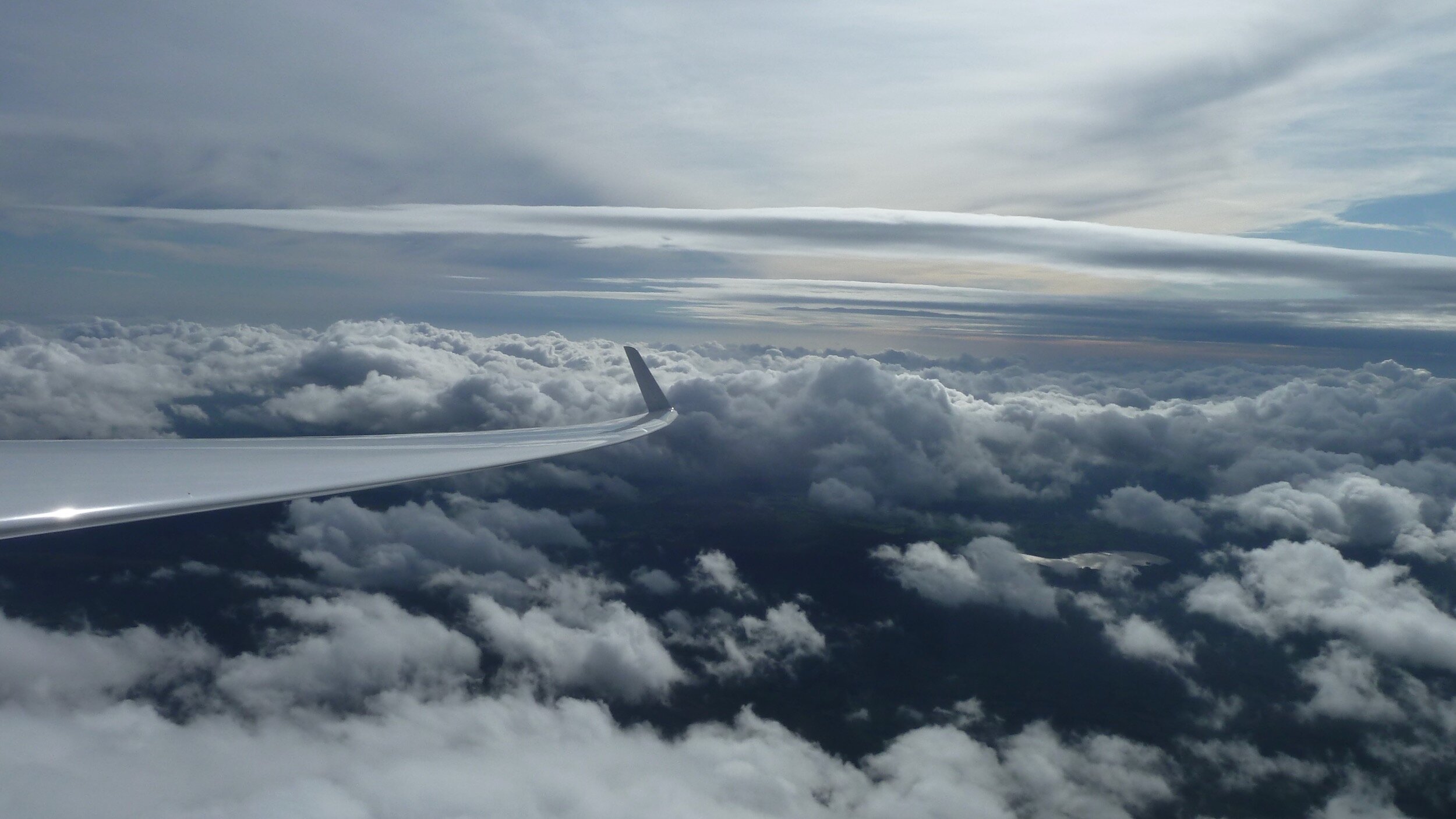
How a Glider Stays Airborne
A thermal is a column of rising air, caused by the effect of the sun heating the ground. The air close to the ground heats up, eventually separating as a bubble or column that is lighter than the surrounding atmosphere. As is rises it cools, and if the air is sufficiently moist, eventually the water vapour it contains will condense and a cumulus cloud is formed, this helpfully marks the area of lift for the glider pilot. On a cross country flight the pilot will circle in this thermal lift under the clouds, and then glide towards the next cloud that would eventually take them around their task for the day.
In moderate winds, the cumulus clouds often line up to form a ‘street’ of almost continuous lift. Thermal soaring is the most common form of lift used by Dunstable pilots in cross-country flights.
When the wind blows towards a hill or ridge such as the Dunstable Downs, the air rises up and over the hill. Thus a glider can fly along the ridge in the rising air and can remain aloft as long as the wind keeps going – all day if you like! In some parts of the country great distances can be covered simply by following the line of hills. From Dunstable it is not unusual to fly down the Chiltern ridge as far as Pangbourne. The Cotswolds and South Downs are other favourites within reach of Dunstable.
In the right conditions once the wind has passed over a hill or mountain and down the other side, it bounces up again and causes a standing wave of rising air. Occasionally we enjoy wave conditions caused by the local hills at Dunstable, but very significant wave patterns can form in more mountainous areas of the UK such as Wales or Scotland. Further afield favourite places to go to experience this would be the Alps or Pyrenees. These waves are usually much higher than the hills that caused them and can stretch for hundreds of miles. Waves are often marked by ‘lenticular’ clouds that appear to be stationary, lined up perpendicular to the wind direction.
Glider pilots love flying in wave. The airflow is extremely smooth, yet often rising very rapidly – 1000ft a minute is not unusual. The glider can travel great distances a very high speeds. It is a wonderful feeling to be able to climb up above the clouds and into the wave system, and up to attitudes giving spectacular views. The record in a glider is over 50,000ft! At LGC we organise expeditions to ‘wave’ sites every year.
Some LGC pilots simply love to float around the local area, soaring peacefully, enjoying the fabulous views over the Chilterns and leaving their ‘otherlife’ behind. Others love high-adrenaline aerobatics, or instructing, or flying our vintage aircraft. The pinnacle of gliding is cross-country soaring and flights of over 300km are common. Regardless of their preference, all our pilots share the same common goal of flying gliders.
